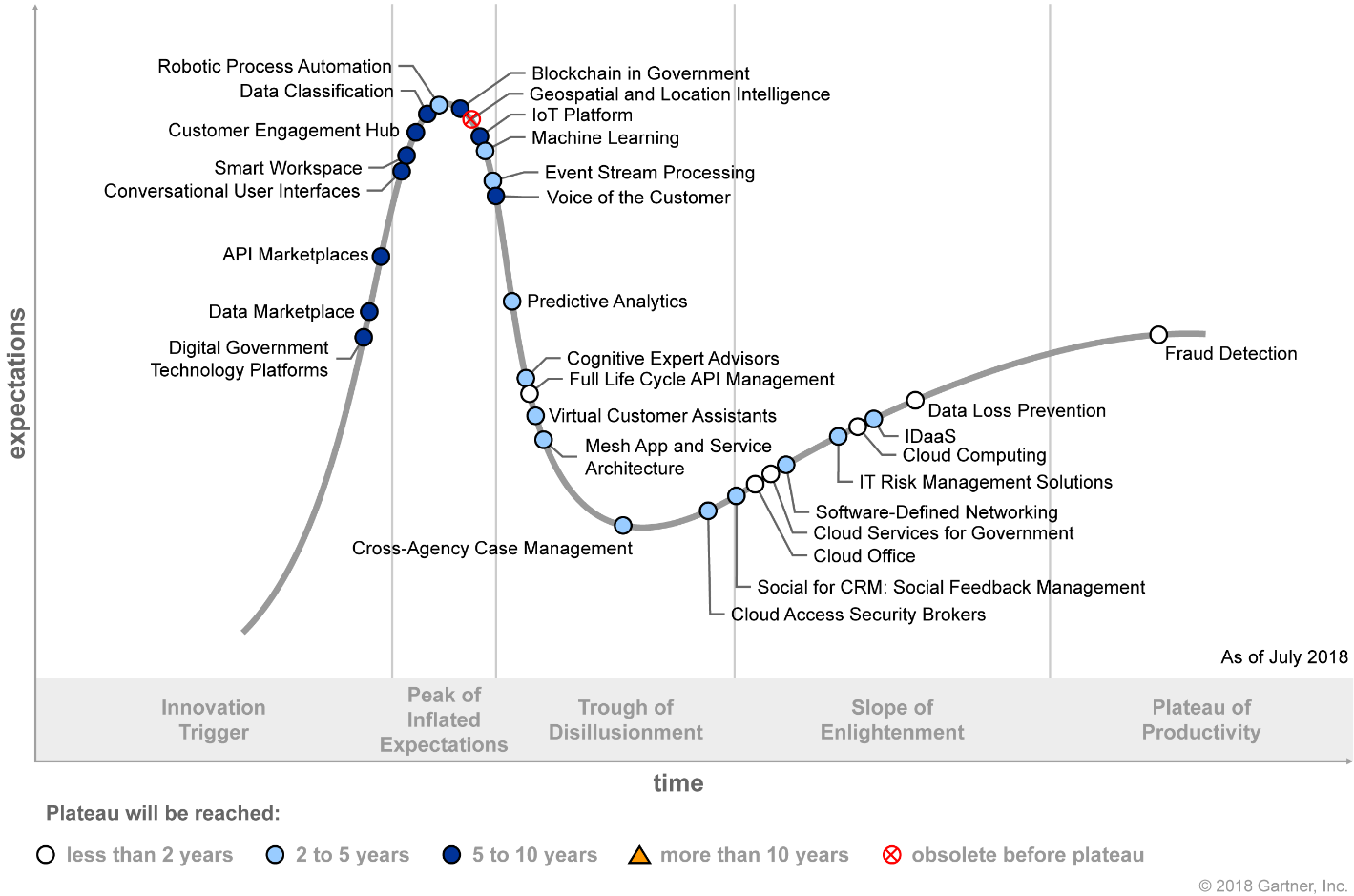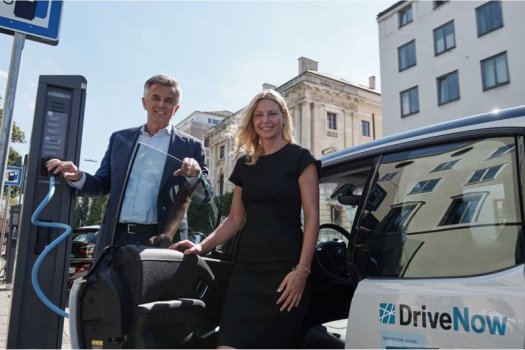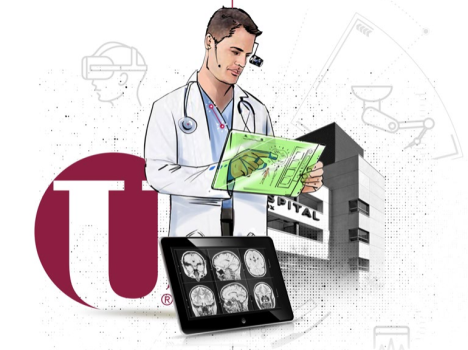
The CIO of an Australian Government department is struggling to modernize legacy applications to support new digital services. He’s under mounting pressure from agency leaders to deliver better, more efficient digital experiences for constituents.
He knows the department needs to advance its level of digital maturity, but how? This is a common story for many governments organizations at all levels, says Rick Holgate, research director at Gartner.
“There have been pockets of progress globally in governments truly adopting a digital attitude and presence, but there have also been some notable missteps,” Holgate says. “Government CIOs must guide their organizations to invest strategically in technology.”
A Hype Cycle can help executives gauge relative risk and timing of emerging technologies and evaluate trade-offs between risk and innovation.
Hype Cycle for Digital Government Technology, 2018

Five technologies on the Gartner Hype Cycle for Digital Government Technology, 2018 are expected to have the most transformational benefit for government organizations over the next 10 years.
No. 1. Blockchain
Blockchain has many potential applications in government. The most transformational impact will be on non-financial uses such as identities, voting, public records and citizen transactions.
Many proofs of concept are underway. Examples include Australian citizens participating as a consumer and provider to a local power grid; and New York City enabling authoritative, trusted and immutable social service transactions for real estate purchases.
Government CIOs, like CIOs in any other industry, should approach blockchain with a healthy dose of skepticism. Gartner expects it will be at least five to ten years until the technology matures and begins to deliver benefits, but it will lead to radical transformation of some government functions and services.
No. 2. Machine learning
Machine learning can solve problems across a vast array of government, citizen and social scenarios. Some examples includes automation, citizen engagement, workforce effectiveness, resource optimization and predictive maintenance.
The technology helps governments, and smart cities in particular, progress toward being more anticipatory and pre-emptive.
More government organizations are exploring uses, with many in initial pilots. Adoption will be driven by growing volumes of data and complexities that conventional engineering approaches can’t handle.
No. 3. Smart workspace
Smart workspaces exploit the growing digitalization of physical objects generated by the Internet of Things (IoT). They deliver new ways of working, scheduling resources, coordinating facility services, sharing information and collaborating.
Digital workplace strategies that focus on facility modernization, more agile work environments and employee experience continue to create interest in smart workspace technologies.
The business impact will be diverse – ranging from improved employee productivity and cultural perception of the workplace, to improved customer experience as employees make better use of smart workspaces to serve clients.
No. 4. Conversational user interfaces
A conversational user interface (UI) is a high-level design model in which interactions primarily occur in the user’s spoken or written natural language. They make machines smarter and improve people’s ability to handle novel situations.
The promise is a dramatic shift from the user having to learn software, to the interface learning what the user wants – although current UIs aren’t yet up to speed.
Consider conversational UIs to improve employee and customer effectiveness, as well as to cut operating expenses and time spent learning arcane computer semantics.
No. 5. Event stream processing
Event stream processing (ESP) enables continuous intelligence and other aspects of digital business. It processes data in an event stream, which is a sequence of event objects arranged in order, typically by time.
The resulting analytics improve decision making by presenting information that could be overlooked. Smarter anomaly detection and faster responses to threats and opportunities are other benefits. They also shield people from data overload by eliminating irrelevant information.
ESP growth will come from IoT, customer experience management and fraud detection applications.
Gartner analysts will provide advice how to progress and scale digital government at Gartner Symposium/ITxpo on the Gold Coast, 29 October – 1 November 2018. To register at the special public sector rate, visit: https://www.gartner.com/en/conferences/apac/symposium-australia/register

Comment below to have your say on this story.
If you have a news story or tip-off, get in touch at editorial@governmentnews.com.au.
Sign up to the Government News newsletter






Michael Andjelkovic on: Council takes on NSW government in court
jdvukovic@bigpond.com on: Council takes on NSW government in court
Tyrone Peter Fernandes on: NSW announces biosecurity appointments